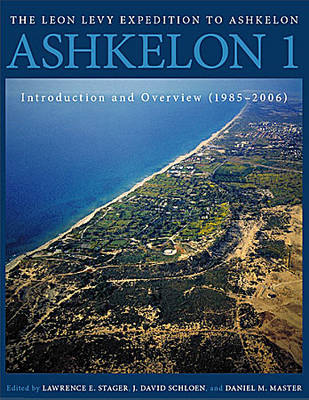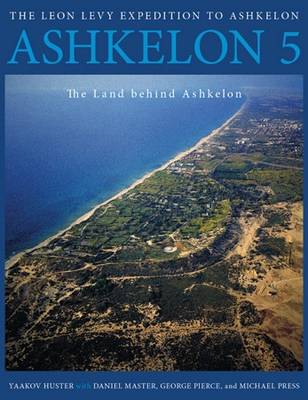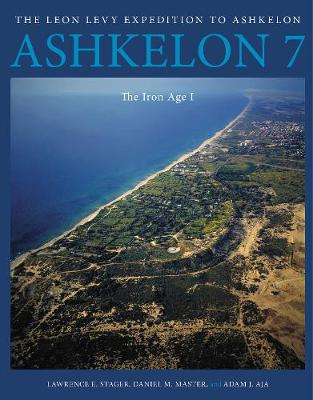Final Reports of The Leon Levy Expedition to Ashkelon
4 primary works
Book 1
Since 1985, the Leon Levy Expedition to Ashkelon, directed by Lawrence E. Stager of Harvard University, has been a leading American archaeological project in Israel. Now, the work of the project is being collected in ten final report volumes published by the Harvard Museum of the Ancient Near East. The first volume, Introduction and Overview (1985–2006), spans more than 700 copiously illustrated pages, many in full color, and includes subjects ranging from microscopic DNA to monumental architecture. In addition, Volume 1 includes plans and descriptions of every architectural phase excavated during the course of seventeen field seasons and reveals the archaeological sequence of the site and aspects of the city plan from the Bronze Age to Crusader times, with special emphasis on Canaanite (Bronze Age) and Philistine (Iron Age) Ashkelon. The chapters in this volume, by more than three dozen contributors, combine to describe Ashkelon’s cultural constants and contingencies over la longue durée (3000 BCE to 1500 CE). As a result, Ashkelon 1: Introduction and Overview (1985–2006) will be an indispensable resource for investigating the maritime and terrestrial history of the southeastern Mediterranean littoral.
Book 3
The Leon Levy Expedition to Ashkelon continues its final report series with a study of the city destroyed in the campaign of the Babylonian king Nebuchadrezzar in December of 604 B.C. In this era, Ashkelon’s markets linked land routes from the southeast to a web of international Mediterranean merchants, and this volume describes the Iron Age bazaar where shopkeepers sold the goods of Egypt, Greece, Phoenicia, Cyprus, and Judah. In addition, in another part of the city, a winery produced a homegrown vintage for distribution abroad.
This volume spans more than 800 full-color pages illustrating the range of imported and local artifacts recovered by more than ten years of excavation. The twenty-eight chapters, by more than two dozen contributors, combine to describe Ashkelon’s pivotal role in the economy and politics of the late seventh century B.C. As such, Ashkelon 3: The Seventh Century B.C. is a indispensable resource for those interested in the Iron Age history of the Eastern Mediterranean and the study of trade and economy in the ancient world.
Book 5
Combining old surveys with new material from salvage excavations, The Land behind Ashkelon provides a wide regional context for the excavations at Tel Ashkelon. This volume is a distillation of numerous excavations by many talented archaeologists, brought together by Yaakov Huster, a man who has devoted his life to preserving the cultural heritage of the Ashkelon region.
Yaakov Huster has not only revisited older surveys but has also taken into account the enormous amount of new information collected by the archaeologists of the Israel Antiquities Authority (IAA) over the last several decades. This volume synthesizes all available data to create the most accurate and updated regional survey of the Ashkelon region to date. As such, it is an invaluable resource to anyone studying Ashkelon and its hinterland.
Book 7
The Leon Levy Expedition to Ashkelon continues its final report series with a study of the Iron Age I. Following the dramatic collapse of the Mediterranean world at the end of the Bronze Age, new groups emerged across the Levantine littoral. One of those groups was the Philistines, famous archenemies of the Israelites in the Hebrew Bible. This volume shows how Ashkelon became a Philistine city. The volume presents evidence for the arrival of a new group from the West that changed fundamental patterns of life. Ceramics shapes, architectural patterns, foodways, industrial technology, decorative traditions, and forms of writing are all explored in this volume, and each of these forms of evidence shows how the newly arrived Philistines first responded to the Levantine world around them. After settling in the seaport of Ashkelon, the Philistines continued to trade internationally, as was typical of earlier inhabitants of the city, and their ongoing maritime connections provide additional insight into the economy of the Mediterranean in the twelfth and eleventh centuries B.C. This volume represents the culmination of more than thirty years of archaeological research into questions of Philistine culture, bringing together research from more than thirty scholars covering all aspects of ancient life in Ashkelon during the Iron Age I.
The volume spans more than 900 full-color pages with forty chapters. The architecture, stratigraphy, pottery, and other finds are presented in considerable detail, shedding new light on this important period in the history of ancient Ashkelon. It is an indispensable resource for scholars interested in the history of the eastern Mediterranean or the background of the Biblical world.



